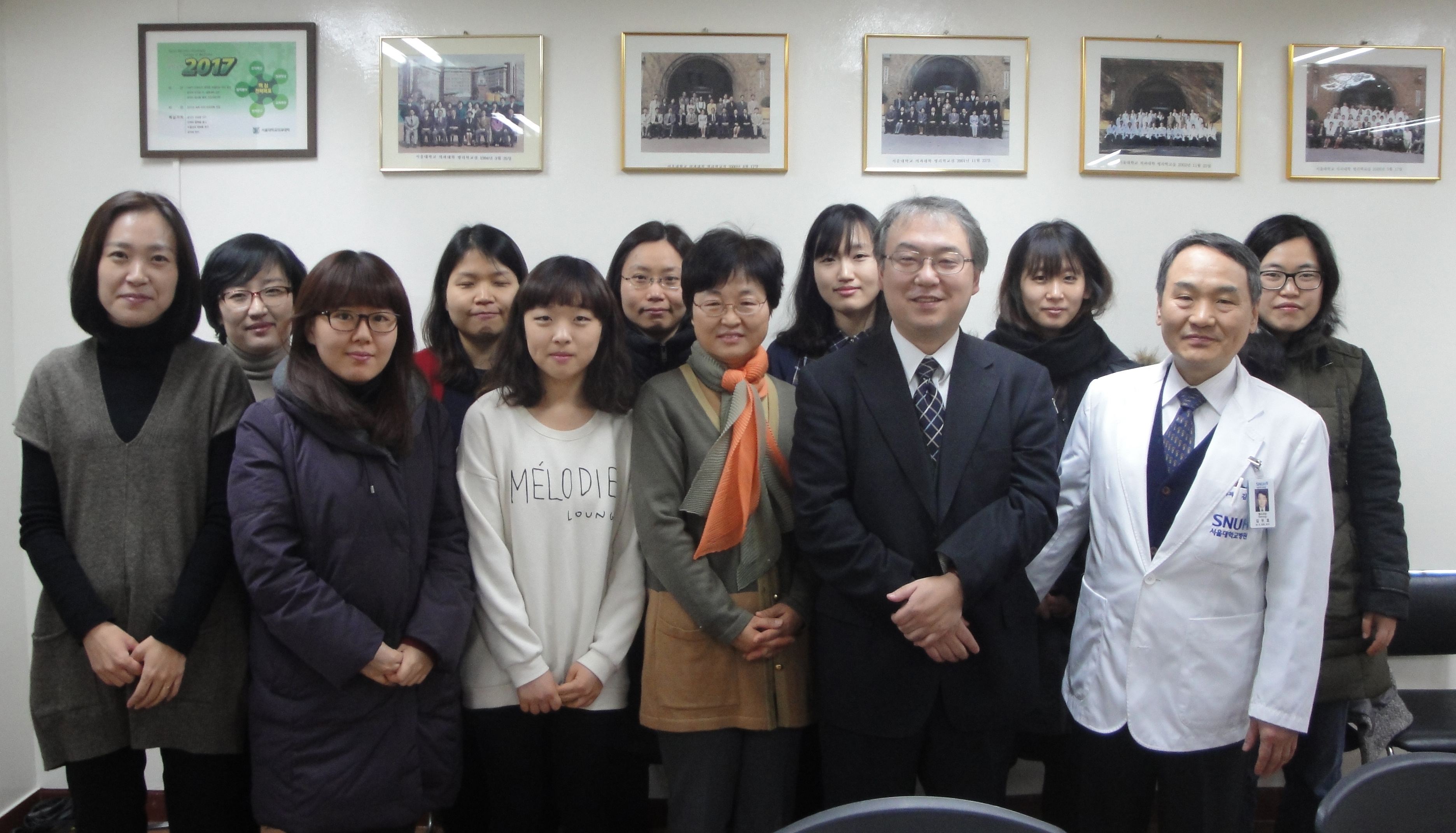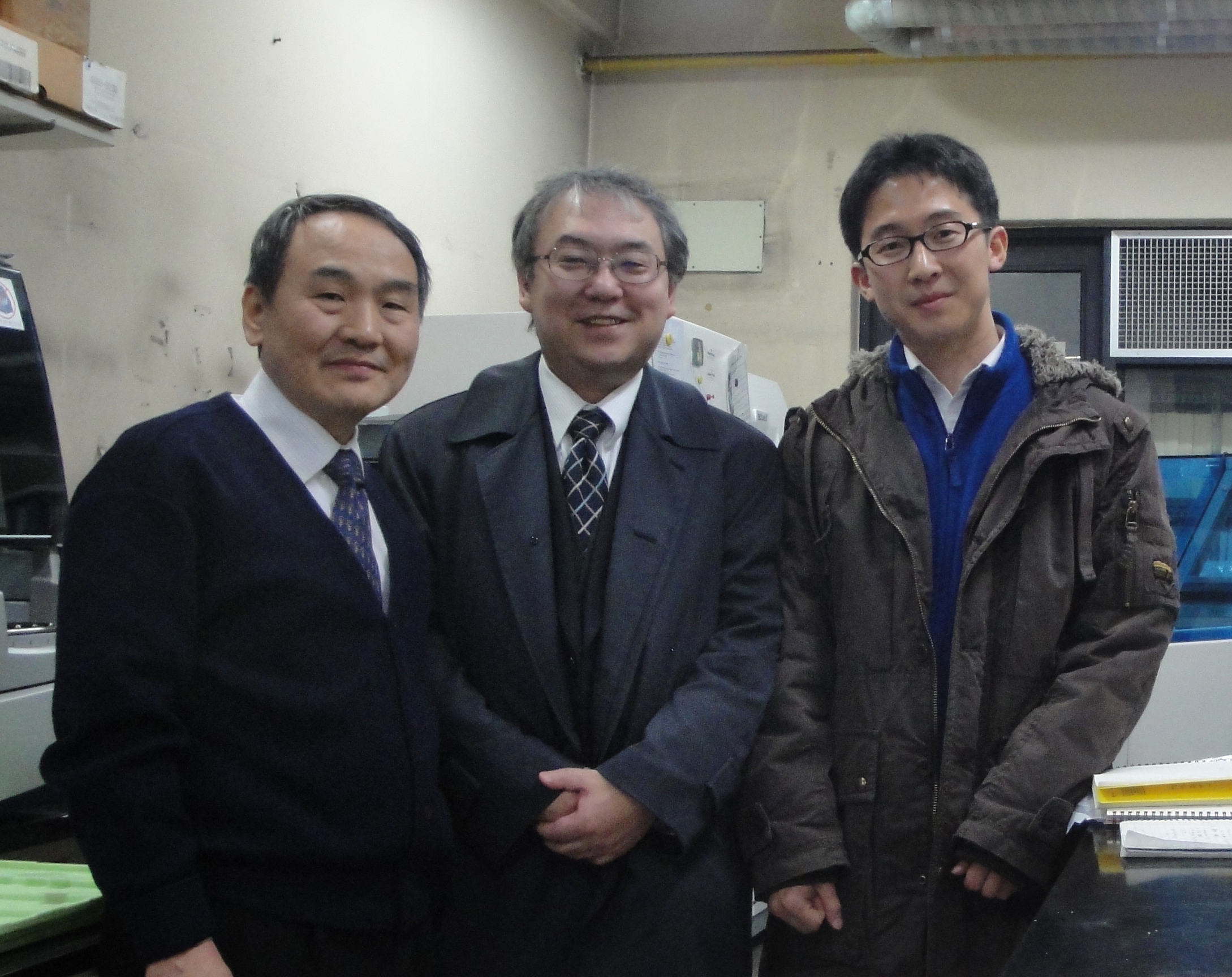Dr. Akiyama from Japan stays in SNU, Korea
A3 Foresight Program: Collaborative Research on the Role of Epigenetic Pathway in Gastric Carcinogenesis
Report of visit to Seoul National University College of Medicine in Korea (Jan. 14 to Jan. 18, 2013)
YOSHIMITSU AKIYAMA (Department of Molecular Oncology, Tokyo Medical and Dental University)
Host researcher
Prof. Woo Ho Kim (Department of Pathology, Seoul National University College of Medicine)
Summary
I visited Prof. Woo Ho Kim’s laboratory (Department of Pathology, Seoul National University College of Medicine) in Korea from January 14 to January 18. The main purpose of this visit was to study changes in expression of histone modification-related genes and the transcription factor genes in gastric cancer (GC) tissues. I also learned the methodologies of tissue array and in-situ detection of messenger RNA in formalin-fixed and paraffin-embedded (FFPE) tissues. I deeply thank Prof. Kim and his laboratory members including Dr. Byeon Sun-ju for giving me this opportunity.
Contents
1. Background
As the collaborative works of the R-2 project in the A3 program, we are studying the mechanisms of gene specific silencing of tumor-suppressor genes during gastric carcinogenesis. My current projects are 1) functional analysis of histone modification-related genes in GCs and 2) epigenetic alterations of transcription factor genes in GCs. Although most functional studies of these two projects were done in collaboration with A3 Chinese members, there are still unknown things in the changes in expression of our genes and/or gene products (proteins) in GC tissue samples. To understand them, I visited Dr. Kim’s laboratory and studied them by immunohistochemistry (IHC) and in situ hybridization (ISH).
2. The experiments in SNU
Prof. Kim and his colleagues had already examined the expression changes of the genes and proteins mentioned above by ISH and IHC, respectively, in many GC tissues (Figure 1). Therefore, I checked the microscope slides by myself, and compared with our data. Then I discussed the scoring of positive/negative staining of ISH and IHC with Prof. Kim and Dr. Byeon. Moreover, I learned how to establish the tissue array and how to perform ISH in his laboratory.

3. Presentation of my work in SNU
I attended the laboratory meeting of Dr. Kim’s group, and gave a presentation of my works including a collaborative research with Dr. Kim. They gave me some good questions and suggestions for my work. Thus, it was a wonderful meeting for me.
4. Acknowledgments
I deeply thank Professor Kim for giving me a good chance to visit his laboratory, and for all his kindness during my stay in Seoul. I also thank his laboratory members including Dr. Byeon for their help and warm hospitality.





